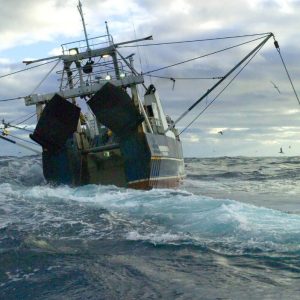First published in The Adventurer, July 2024.
Snapper have been likened to zombies, our scallop fishery has collapsed and exploding kina populations are leaving little habitat for other life on coastal reefs There are a myriad of issues contributing to these worrying phenomena and officials are blatantly ignoring most of them.
A common factor in all of these fisheries is the bulk harvesting commercial fishing methods used. Trawling, dredging and Danish seining are still permitted in inshore waters despite the scientific evidence showing that sensitive nearshore benthic habitats ought to be protected from destructive fishing practices. So, it would be stupid to dismiss the indirect impacts these methods have on our marine ecosystems.
Non-selective bulk fishing methods, including purse seining, scoop up various types of sea life, not just the target species. And we aren’t talking about a couple extra unwanted fish in the end of the net, but excessively large quantities – A devastating consequence of quota owners prioritising monetary gains over the environmental impact.
The majority of snapper commercially caught in New Zealand is harvested using trawl methods. Gurnard, trevally, John dory and Jack mackerel are some of the unlucky victims captured in the trawl nets alongside snapper.
Fisheries New Zealand (FNZ) has indicated a review of the west coast snapper fishery on the North and South Island (SNA 8 & SNA 7) is likely to occur this year, alongside at least a dozen other species in FNZ’s annual October review round. These two stocks have rebuilt from very low levels and we can expect FNZ to propose an increase to the commercial catch limits for snapper, and if they do, LegaSea will respond with a submission.
When SNA 8 was last reviewed in 2021, we advocated hard for a precautionary decision because an increase in catch means more trawling and a greater impact on the environment and non-target species.
Shane Jones is now the Minister for Oceans and Fisheries. He will make the final decision for the upcoming fish stock reviews. In doing so, he is legally obliged to take into account any past, present or future effects of fishing on any fish stock and the marine environment. So he cannot permit an increase in snapper catch without considering the impacts on other, more vulnerable marine species.
Ministers haven’t always followed these rules. In 2021 the then Minister decided to retain the commercial catch limit of Northland crayfish (CRA 1). In 2022 the decision was found to be unlawful by the High Court because it failed to take into account the impacts of fishing on non-target species such as kina, and the wider effects of fishing on the marine environment.
Poor decision making has left behind some nasty repercussions. Depleted crayfish populations and kina barrens, but it’s something we are not willing to swallow.
The current quota management system is geared towards single-species management and many ministerial decisions have not adequately accounted for the adverse impacts of fishing on wider marine ecosystems.
To avoid the further depletion of some of our favourite marine life, broader consideration needs to be given to all the sea life that will be affected if catch limits for the target species are increased. This is particularly important while the use of destructive bulk harvesting methods is still permitted under the quota management system.





